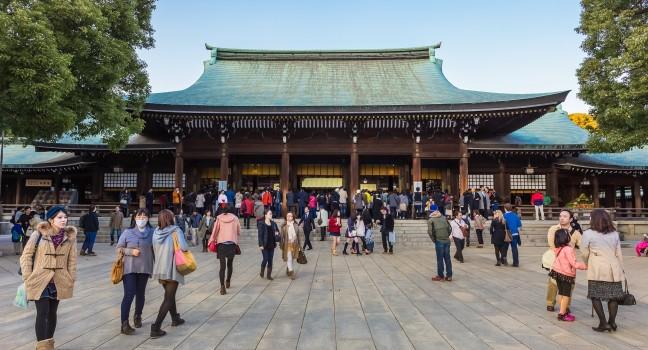Meiji Jingu Shrine

This shrine honors the spirits of Emperor Meiji, who died in 1912, and Empress Shoken. It was established by a resolution of the Imperial Diet the year after the emperor's death to commemorate his role in ending the long isolation of Japan under the Tokugawa Shogunate and setting the country on the road to modernization. Virtually destroyed in an air raid in 1945, it was rebuilt in 1958.
A wonderful spot for photos, the mammoth entrance gates (torii), rising 40 feet high, are made from 1,700-year-old cypress trees from Mt. Ari in Taiwan; the crosspieces are 56 feet long. Torii are meant to symbolize the separation of the everyday secular world from the spiritual world of the Shinto shrine. The buildings in the shrine complex, with their curving, green, copper roofs, are also made of cypress wood. The surrounding gardens have some 100,000 flowering shrubs and trees.
An annual festival at the shrine takes place on November 3, Emperor Meiji's birthday, which is a national holiday. On the festival and New Year's Day, as many as 1 million people come to offer prayers and pay their respects. Several other festivals and ceremonial events are held here throughout the year; check by phone or on the shrine website to see what's scheduled during your visit. Even on a normal weekend the shrine draws thousands of visitors, but this seldom disturbs its mood of quiet serenity.
The peaceful Meiji Jingu Gardens (Meiji Jingu Gyoen), where the irises are in full bloom in the latter half of June, is on the left as you walk in from the main gates, before you reach the shrine. Designed by Kengo Kuma, the architect behind Tokyo's new Olympic stadium, the Meiji Jingu Museum displays personal effects and clothes of Emperor and Empress Meiji—perhaps of less interest to foreign visitors than to the Japanese.



